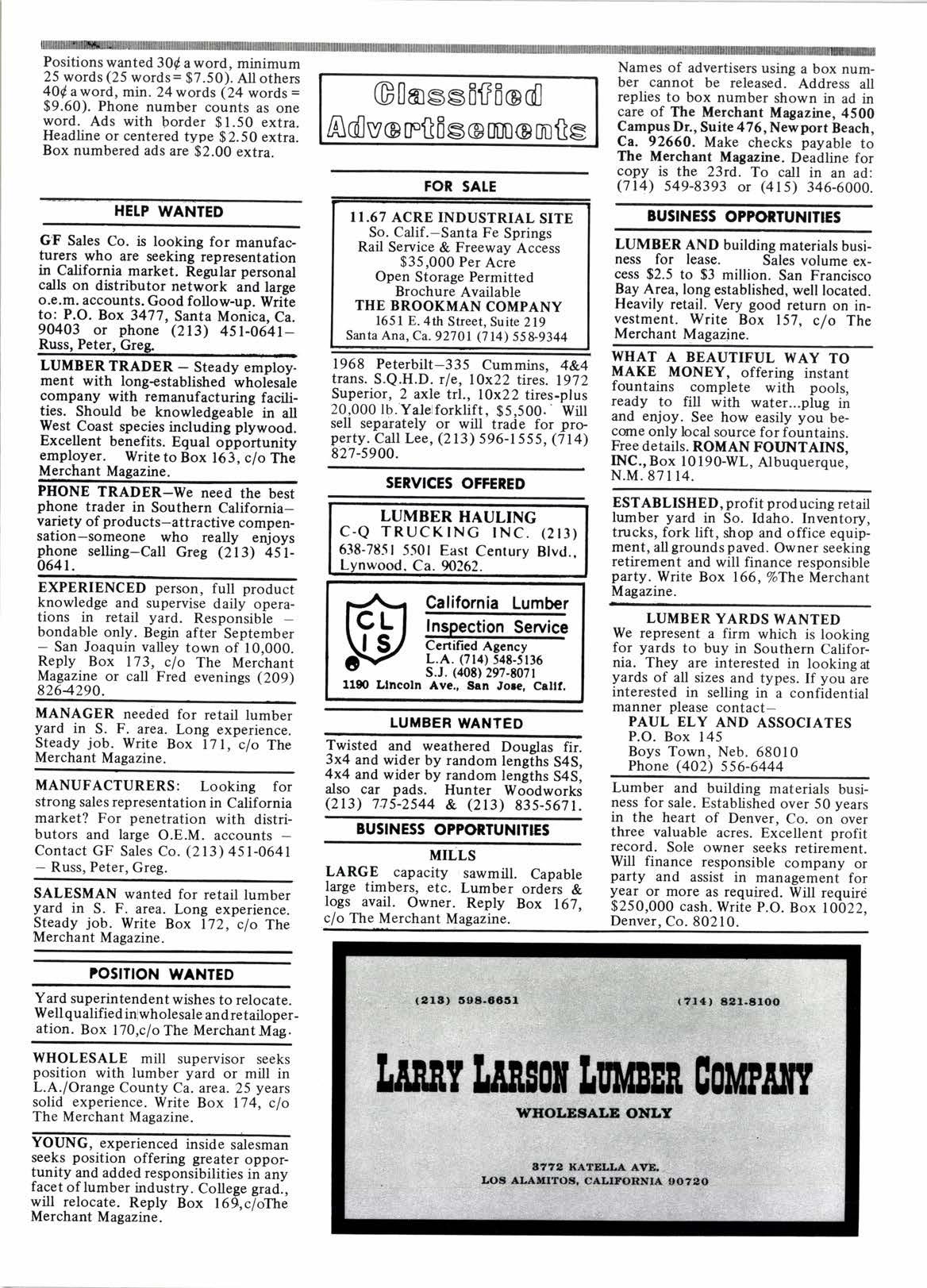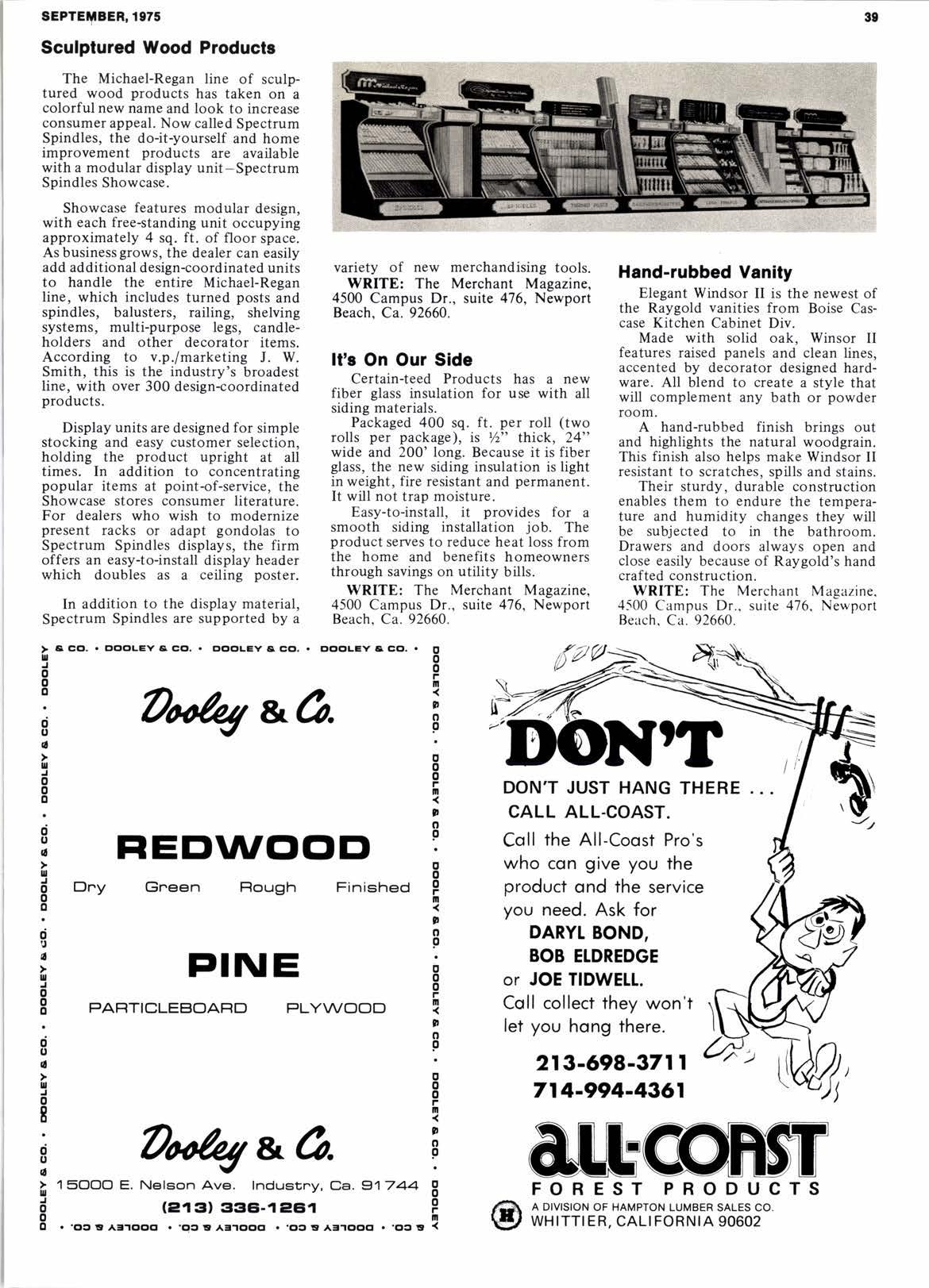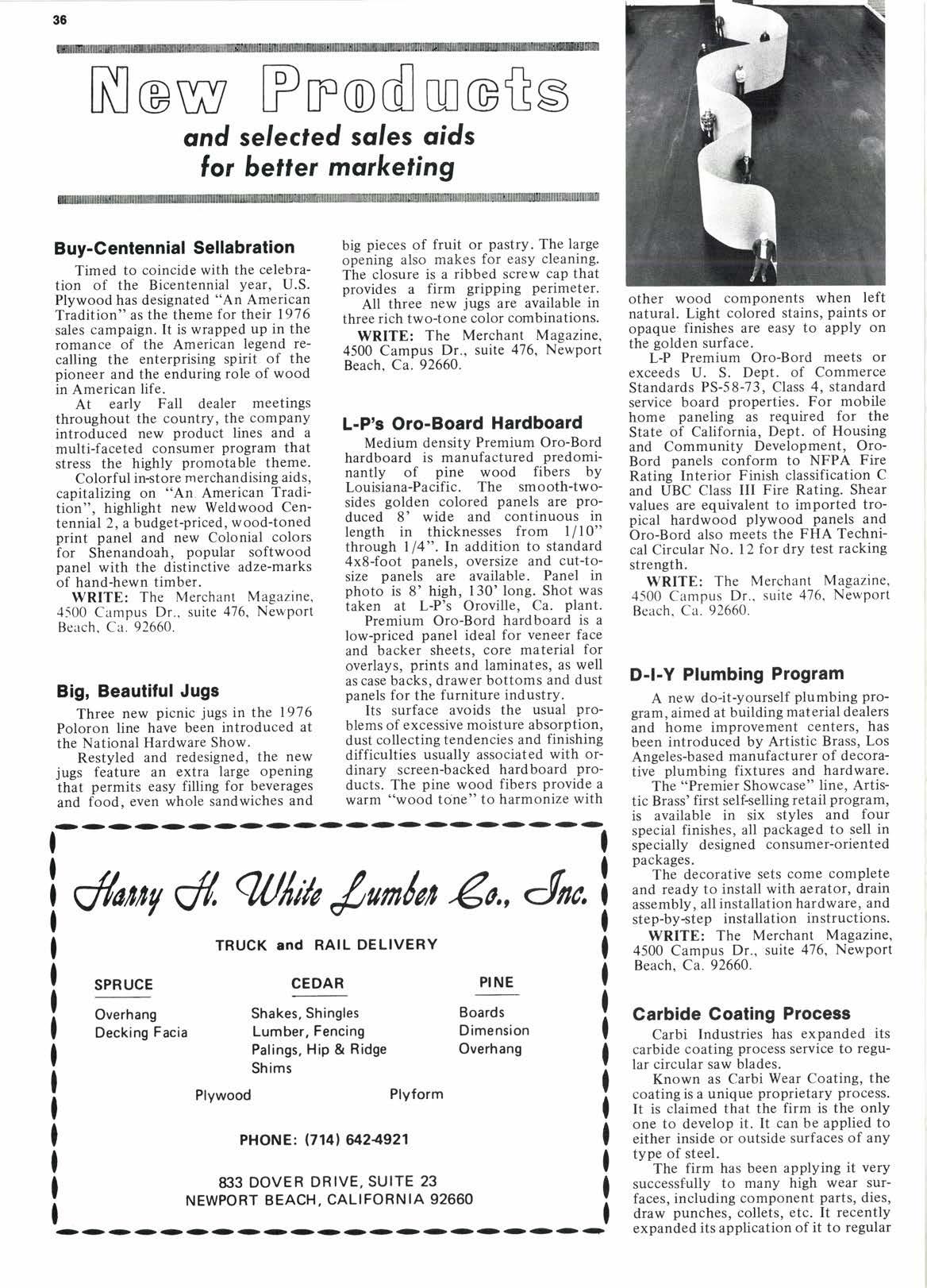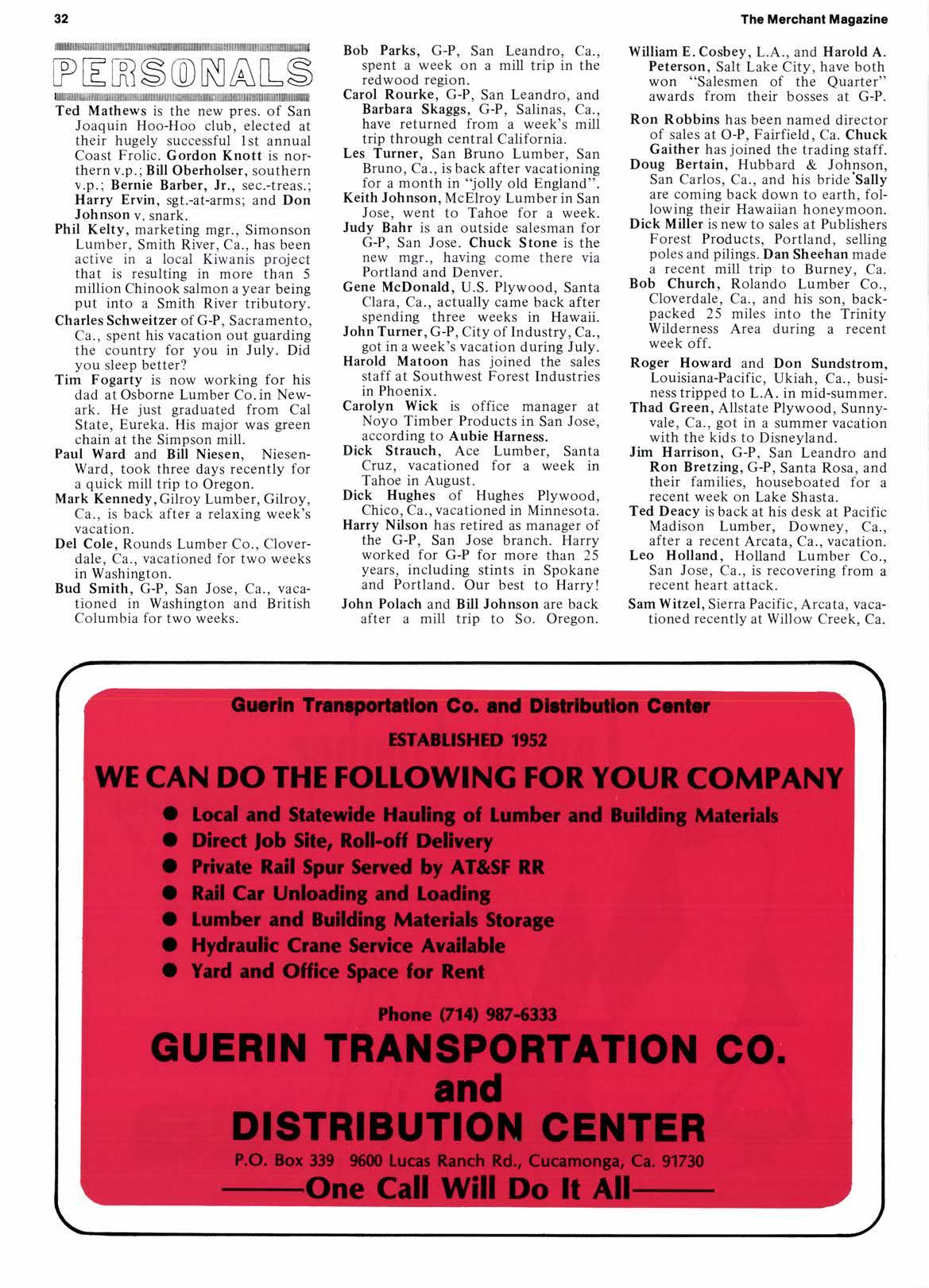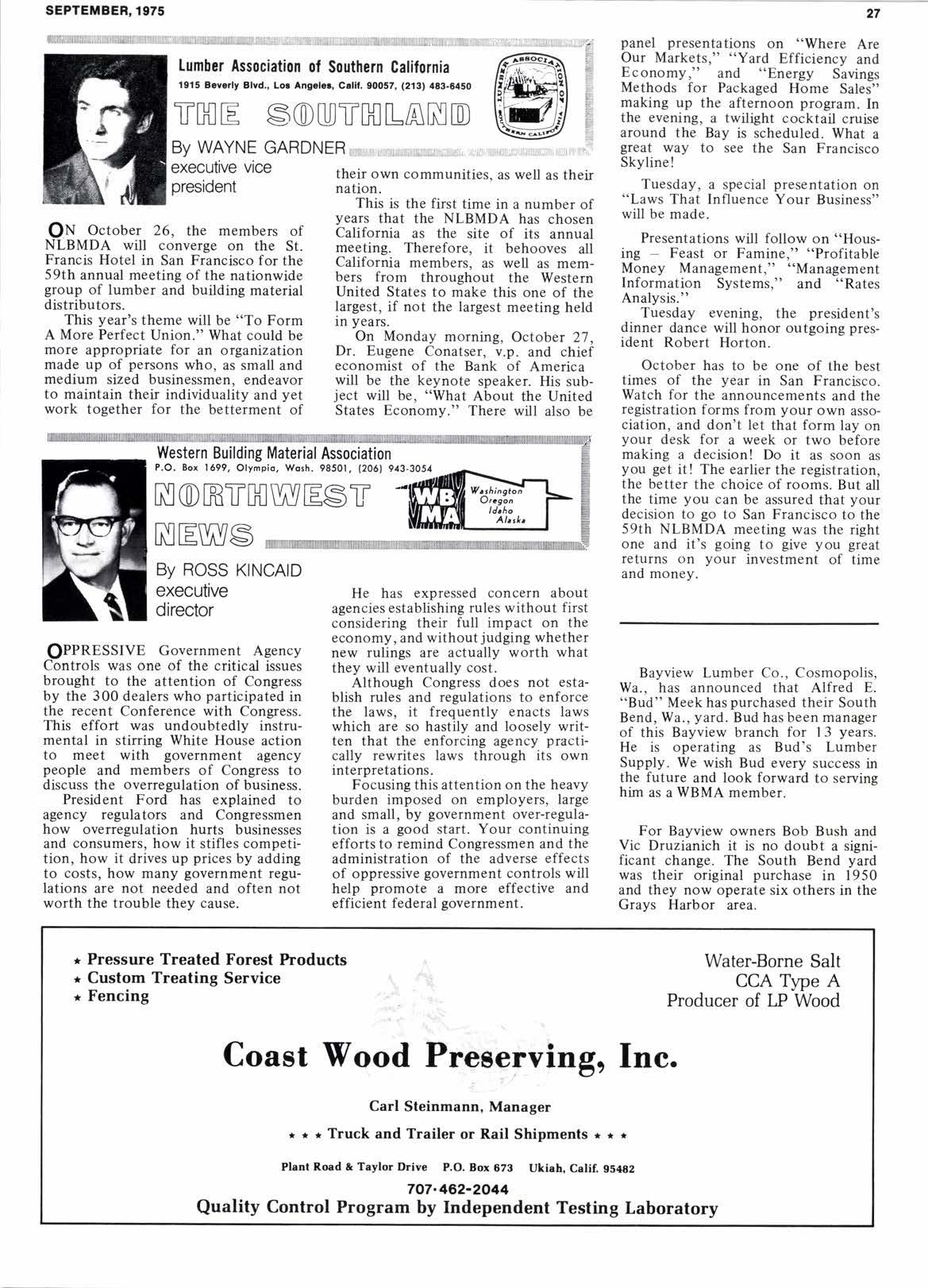
3 minute read
The Top Ten Gut a Wide Swath
By Dwight Curran Merchant Magazine Contributing Editor
a new total of I billion 502 million feet. Nevertheless, this is a large figure for a company which started in business less than three years ago. In addition, L-P's production is as large today as Weyerhaeuser's was l0 years ago.
Production capacity of this firm is rated at more than 2-l12btllion feet. At the present time, given the right market conditions, L-P could easily increase production by nearly one billion feet! Included in the year's production figures are some of lhe 1974 acquisitions which L-P made. These include the Commander Industries complex near Redding, Ca, and the venerable Cheney Studs, headquartered at Seattle, Wa.
In third place is Georgia-Pacific. Production of this well-known firm dropped more than 200 million feet to 915 million feet. During the year, G-P started up some new mills in the Southern Pine region. Chairman Robert Pamplin has indicated that most increases in sawmill cut will come from this paft of the country in the future.
THE TOP TEI{
By combining the production of Georgia-Pacific with Louisiana-Pacific, (which G-P spun off two years ago) the production figure is about 100 million feet more than the production of Weyerhaeuser. Prior to the spin-off, however, G-P's production was signi' ficantly smaller than Weyerhaeuser. Thus, through an aggressive acquisition policy pursued by L-P's top man Harry Merlo, and an equally aggressive expansion policy followed by G-P's Bob Pamplin, these two firms have managed to increase their penetration of the industrv.
Production Change
Fourth place goes to Boise-Cascade Corp. Despite a production drop of I 15 million feet Boise still kept in the same spot it had last year. Production cutswere most noticeable at La Grand0 and Medford, Or., as well as the Beaver Marsh, Or., site.
Moving up into fifth place this year is the Pack River Co. of Spokane, Wa. Production dropped 50 million feet as compared to 1913. With only one or two exceptions, the cut was off at nearly every mill. Pack River mills are located in the tri-state area of Washington, Idaho, and Montana.
San Francisco-headquartered PotIatch Corp. pulled into sixth spot this year, although, it too showed a decrease as did so many of the others in the top 10. Their cut dropped by 45 million feet. The Pierce, Id. plant showed a drop of 24 million feet while the Lewistown, Id., plant cut back by l5 million feet. Some mills showed an increase with the largest coming from the Cloquet, Mn. stud plant.
In seventh spot was Champion International, (U.S. Plywood), whose production dropped nearly one-third, or 220 million feet. Production was off nearly 60 million feet at McCloud, Ca., alone. The McCloud facility was the subject of an article in the San Francisco Chro nicle last y ear which pointed out how adverse economic conditions caused havoc in the small town.

Story at a Glance
A number of comparisons and breakdowns of the most recent sawmill production figures accounted for by the purchase of existing firms, among other reasons. For example, the Omak, Wa. mill accounted for a 43 million feet increase in production, but this did represent an acquisition.
Weyerhaeuser is still numb€r one, but Louisiana-Pacific is not far behind . some new names appear on this year's top ten list.
Publisher's Paper Co. is in the ninth slot. Although the Toledo, Or., mill showed a sizable spurt in production, reductions at three other mills caused an over-all decrease of 73 million feet.
Rounding out the top ten was a newcomer to this year's list, but an old, well-known firm among lumbermen, Willamette Industries, which bowed in for the first time. An acquisi tion at Lebanon, Or., increased their production by 106 million feet but small decreases at existing plants were common.
Incidentally,if we had to give a nod for the largest production of lumber at a single site, it would have to go to Potlatch Corp. at Lewistown, Id. The mill cut 148,552,000 feet of lumber last year, or about 25 carloads a day. And, no matter how you cut it, that's a lot of lumber in anvbodv's book.
The Others
Sometimes wonder who missed out on this yeat's top ten? Or perhaps you're just curious about a mill that you buy from all the time. lVell, for that reasonn we'ye included some sf the scratches as well as trose who may represent local interest. Since numerical comparisons would be meaningless, we've omittpd &om.
Their Bonner,Mt., plant also showed a drop of more than 50 million feet. Bonner, incidentally, is the location of the former Anaconda Copper Co. sawmill, which Champion bought in 1973. Eighth place belongs to Crown Zellerbach which was an also-ran last year. A production jump from 306 million feet to 440 million feet was


